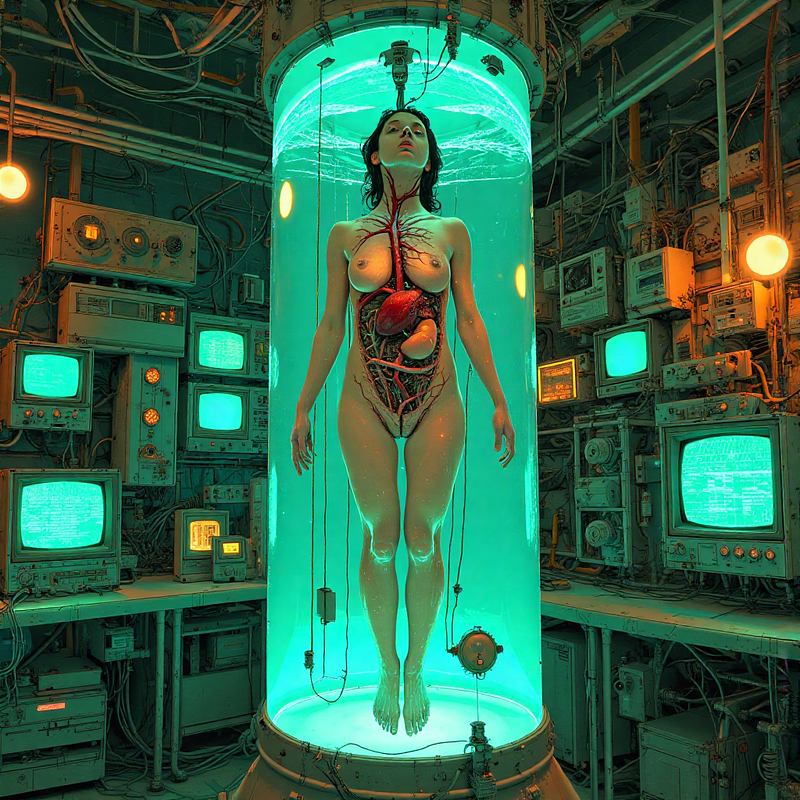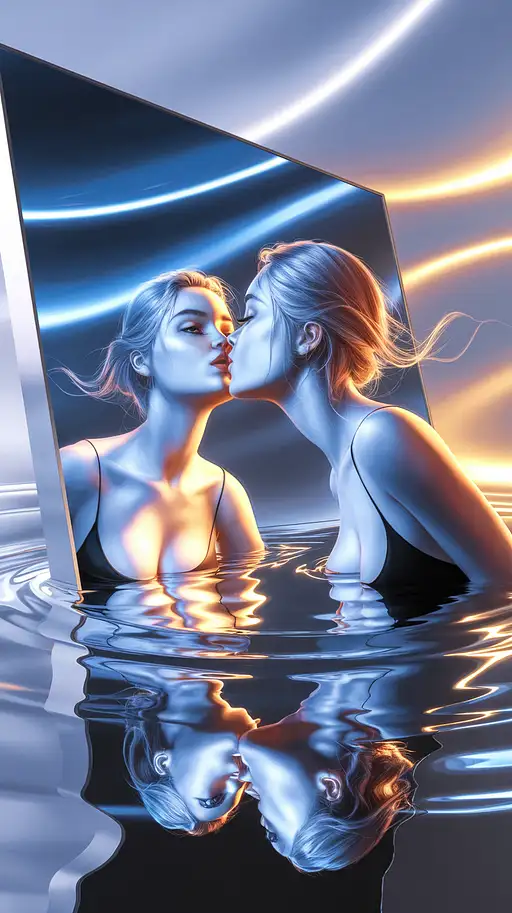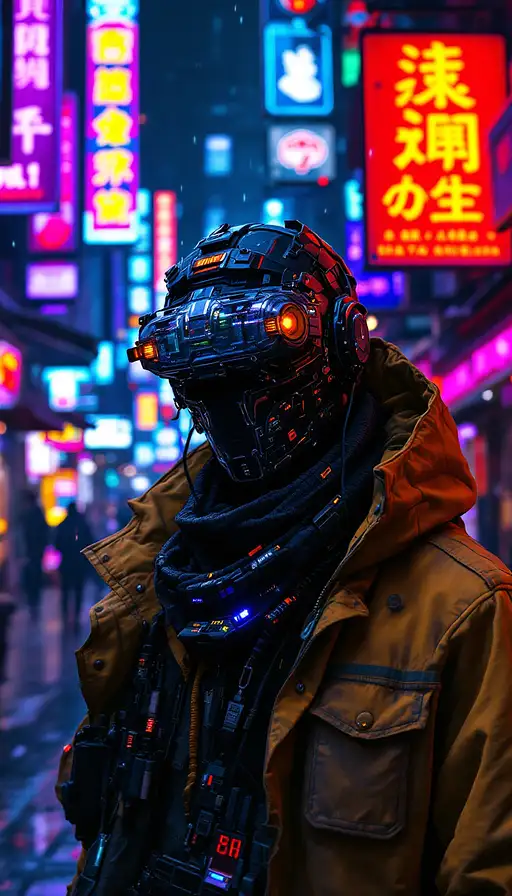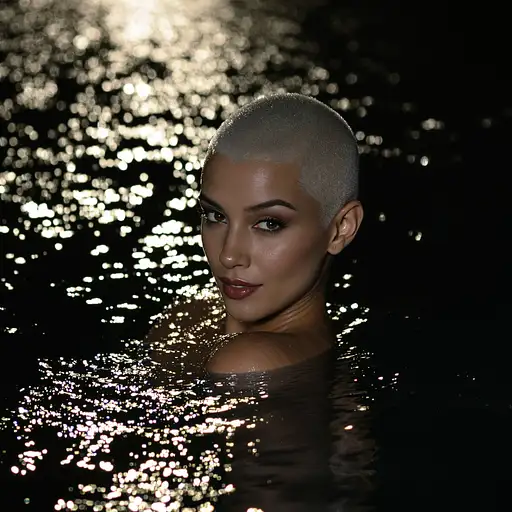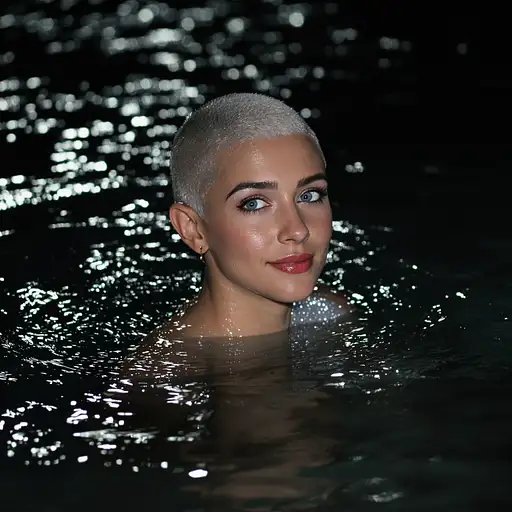
5 months ago
(Primary Subject: Woman, Transparent Body, Internal Organs Visible, 1.6 weight), suspended mid-air within a tall, cylindrical glass chamber filled with luminous, teal-hued suspension fluid. Her skin is entirely absent, exposing intricate internal organs—heart pulsing vividly, lungs rhythmically inflating, and veins branching like delicate crimson lace (intricate anatomical accuracy, vivid colors, hyper-realistic details, 1.5 weight). Surrounding her is a complex science lab rendered in a fusion of Cassette Futurism and Atompunk styles. Vintage technology—analog dials, bulky CRT monitors flickering with green data streams, magnetic tapes spinning, tangled cables, and softly glowing vacuum tubes—is intricately arranged, suggesting advanced but archaic machinery (Cassette Futurism aesthetics, Atompunk elements, 1.4 weight). The lab lighting is dim, moody, casting dramatic, cinematic shadows that amplify the mystery of the scene. Warm, amber indicator lights contrast starkly with cool, teal-hued chamber illumination, creating dynamic interplay (dramatic cinematic lighting, volumetric illumination, strong chiaroscuro, 1.4 weight). Rendered photographically, utilizing the cinematic realism and fine grain of classic film stock captured through a Leica Summilux lens (cinematic lens effects, film grain texture, shallow depth of field, 1.3 weight). The composition evokes both scientific awe and haunting existential wonder, a blend of intrigue and unsettling beauty (narrative depth, symbolic complexity, emotional impact, 1.3 weight).
